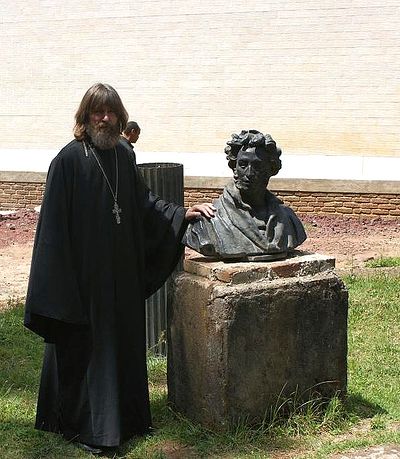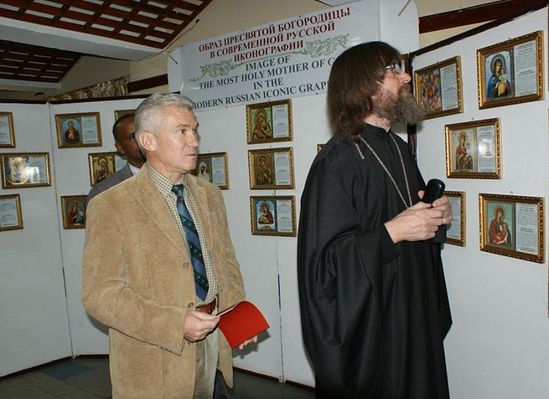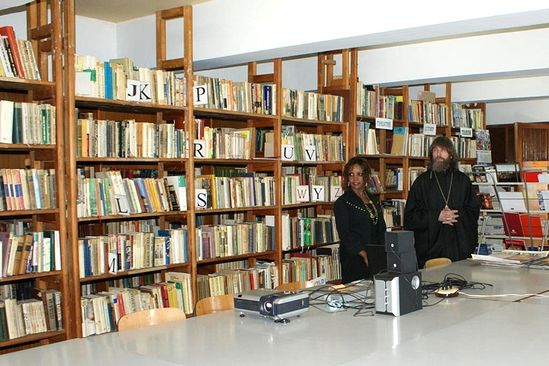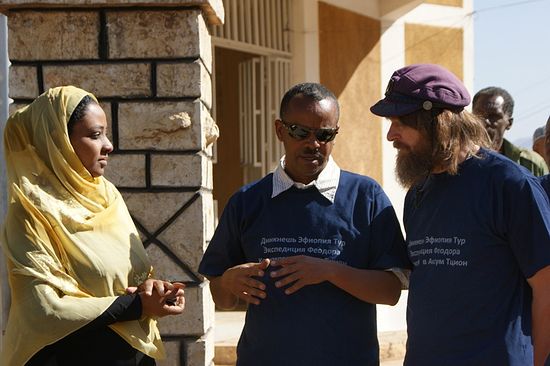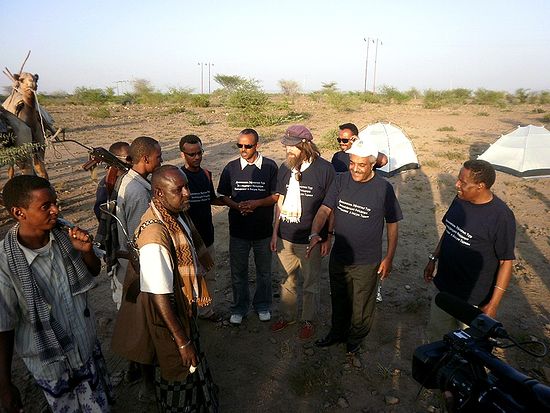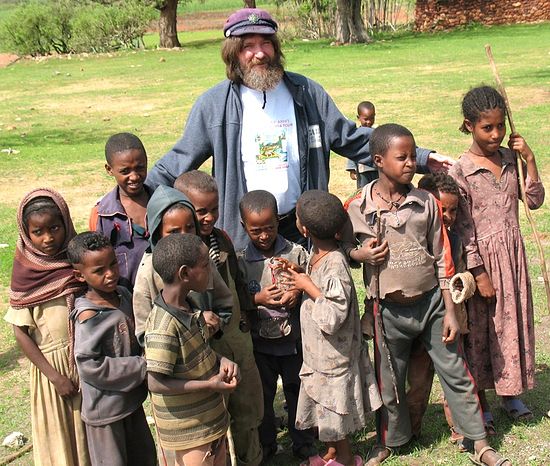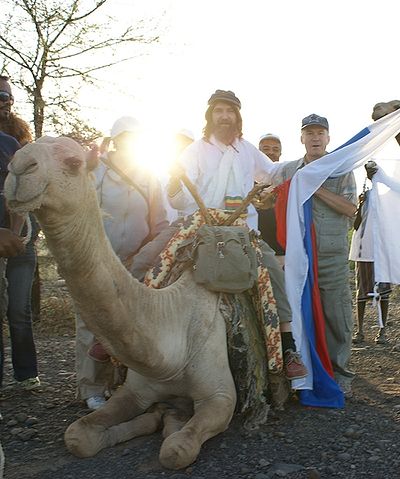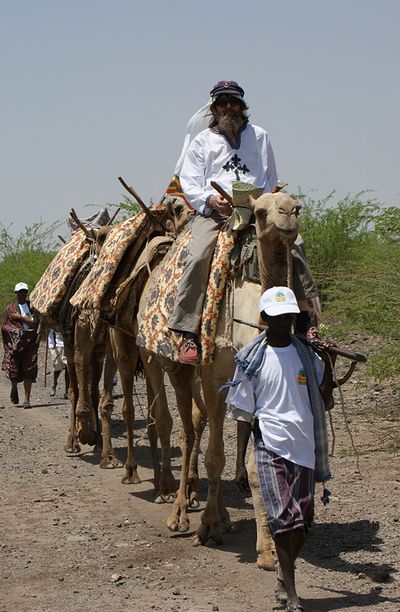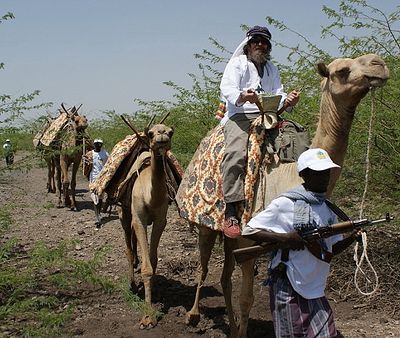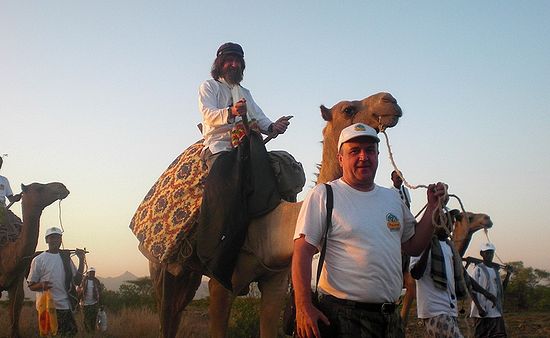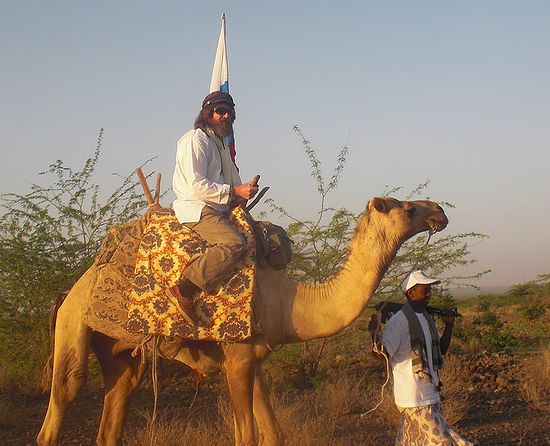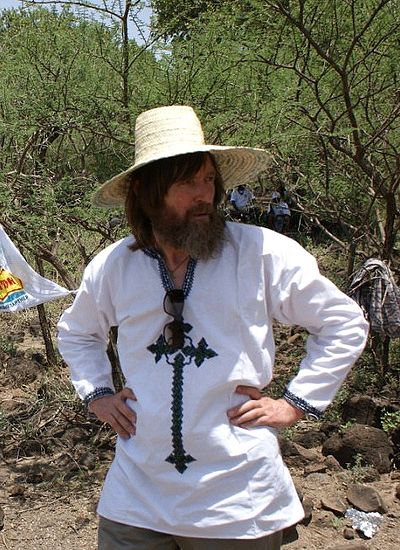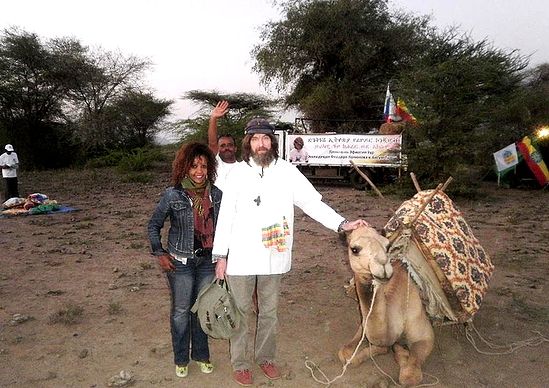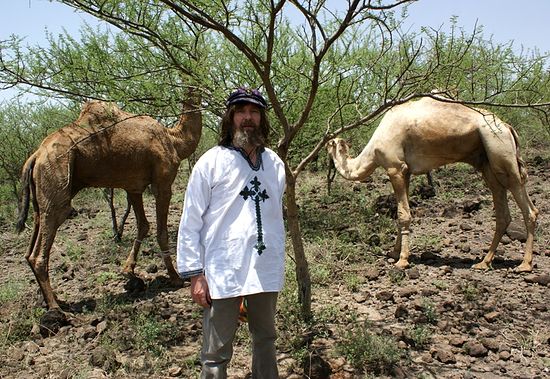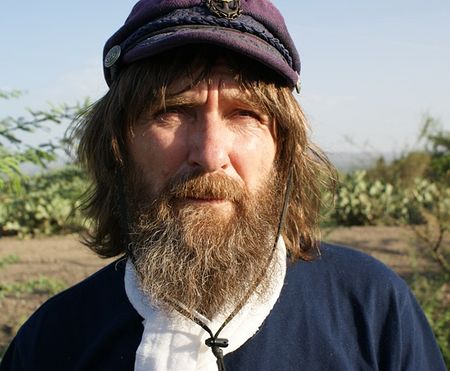 Priest and traveler, Fr. Feodor Konyukhov
Priest and traveler, Fr. Feodor Konyukhov
"The tribe is believed to be one of the most willful and scofflaw. The situation here became more complicated after a number of wars, which left people with many firearms—mostly our [Russian] Kalashnikov rifles," organizers of the expedition quoted Father Feodor as saying to Interfax-Religion correspondent. Nevertheless, the travelers have been given a most gracious welcome, expressed in the local tradition of the kissing of hands, even by gun-toting men.
"This is the way we traditionally greet a priest, but Afars greet their guests like this." The Afars gave two receptions with national dances and songs in honor of the Russian traveler. Fr. Feodor Konyukhov presented a local chief one of his own hand-painted icons," organizers said.
Members of the expedition, which started on March 25, are making their way across the desert on camels. There is often not enough drinking water, and the group is living on instant noodles, because boiled food is the only safe thing to eat in this land where the water is scarcely fit even for bathing.
Before the expedition began, on March 21, Fr. Feoder met with the Ethiopian President Girma Wolde-Giorgis, who emphasized that Russia and Ethiopia are bound together culturally through the great poet Alexander Pushkin, whose genealogy can be traced back to Ethiopia. (Pushkin's great-grandfather, Abraham Petrovitch Hannibal, was a brought from captivity in Turkey to Tsar Peter the Great. He was favored by the Tsar, and became a valued member of his court.) In fact, the two countries have historically always been on friendly terms.
On the same day, Fr. Feodor met with Russian doctors who work in Ethiopia at the Russian Red Cross hospital. He also visited the Russian cultural center in Addis Ababa, and spoke with the Russian Ambassador to Ethiopia, Valery Utkin. On March 22, he took a tour of the Ethiopian capital, visited churches, museums, and schools.
On March 24, Fr. Feodor arrived at the starting point of the expedition—the city of Harar, located 500 km from Addis Ababa, in the eastern part of the country. This city is perched on a tall cliff and surrounded by a stone wall. Harar is a market city, where traders come from all over Ethiopia. There, Fr. Feodor obtained some traditional Ethiopian clothing—wide capes and long, loose shirts made of home-spun cloth—well-suited for desert travel, since it protects from the sun during the day, and warms the body during cold nights.
The official start date was March 25. The expedition extends through deserts and rocky savannas, passing around peaks and crevasses inaccessible to camels. Fr. Feodor is accompanied by local camel drivers and translator-guides who know the local dialects.
The route totals 1200 kilometers, and a day's march is about 30 kilometers. Points along the route include the cities of Addis Ababa, Awash, Harar, Dessie, Mek'ele, and Axum. They will travel through territories inhabited by five little-known tribes, and familiarize themselves with local life and traditions.
The expedition is called The Ark of the Covenant, as its final destination is the town of Aksum, where one of the main religious shrines is supposedly kept. Ethiopian tradition holds that the tablet of God's commandments received by Moses on Sinai are preserved there.
Fr. Feodor got his inspiration for the expedition from the legendary 19th century Russian officer, explorer and diplomat Alexander Bulatovich, who played an important role in the Ethiopia's independence.
* * *
Pravoslavie.ru/OrthoChristian.com presents below a brief photo report of Fr. Feodor Konyukhov's expedition, provided by its members and organizers.
